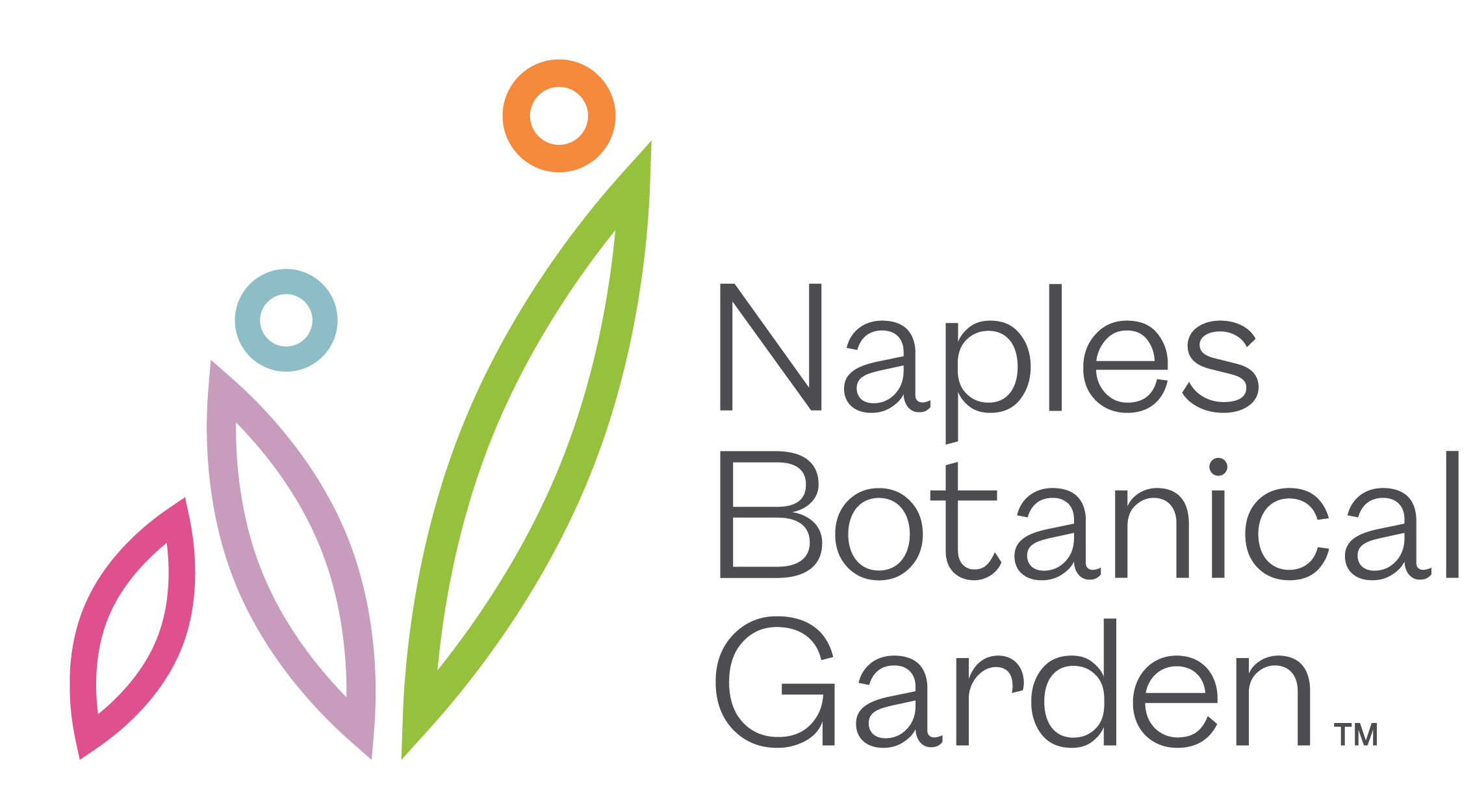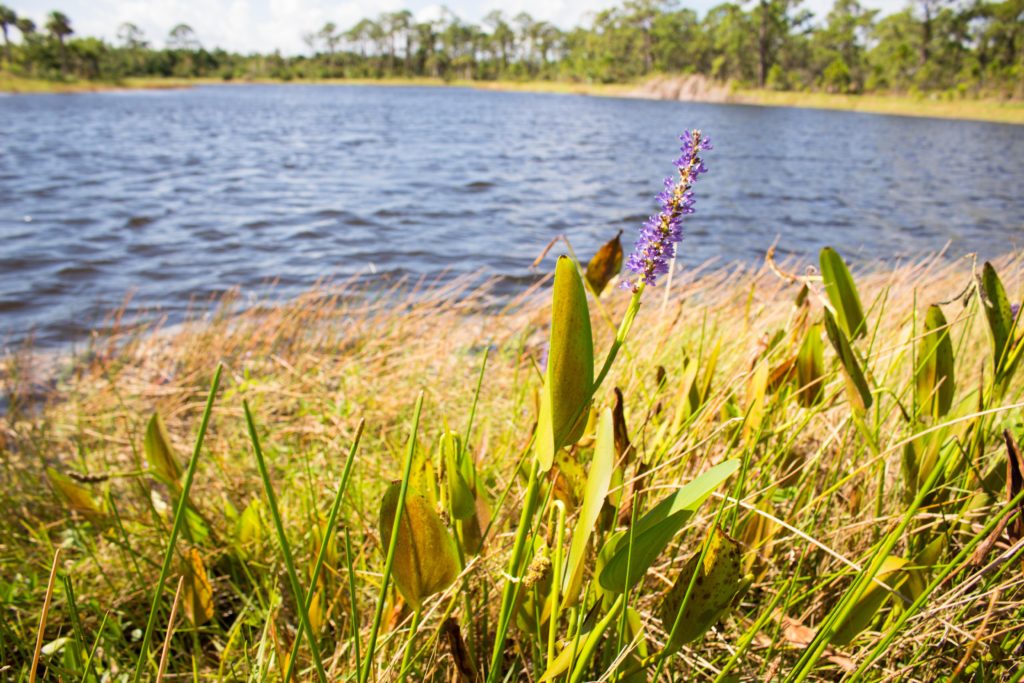Hurricane Ian scarred Southwest Florida’s landscape, and we know many people are anxious to replant as part of their recovery. We encourage doing so! Plants can help our community withstand storms, improve water quality, support wildlife, and create a sense of beauty, serenity, and civic pride.
Before you run to your local nursery, let’s explore strategies and landscaping principles that will maximize your greenspace’s environmental benefits and help ensure the longevity of your new trees and shrubs.
In the short-term:
- Wait for rain. Planting during the dry season will use precious groundwater and rack up water bills. Hold off until the summer rains begin. Your plants and purse will thank you.
- Don’t count a plant as dead yet! You might be surprised by what springs back to life in the coming months.
- Resist the urge to prune. Doing so takes away some of a plant’s stored energy. Beneath the dead leaves are buds of new ones ready to flush. Allow plants or trees to defoliate naturally, and let nature run its course.
- Address broken branches. Scan your tree canopy to make sure there are no dangling limbs. Remove them safely if you can or call an arborist for help. If you notice jagged breaks, make a clean cut. The tree’s wound will heal better that way.
- Avoid commercial fertilizers. Plants will fare better if you let them rebound slowly on their own.
- Watch for signs of soil pathogens such as fungi that may cause leaf wilting. Storm-battered plants are more susceptible to disease than healthy ones. On new growth, monitor for pests like mealy bugs and scale. Don’t apply wide-spectrum pesticides as precautions; rather, wait until you can confirm an infestation, and then target only the culprit.
In the longer-term:
This recovery period provides an opportunity to rethink our yards and greenspaces and create landscapes that stand up to storms and the region’s changing climate conditions. With these guidelines, you’ll both add storm protection and improve the region’s environmental health in many other ways.
- Think in layers.
You can replicate nature’s complex ecosystems on a small scale by adding layers to your landscape. Consider surrounding some of your trees with shrubs and palms, which create a protective buffer. Think about adding groundcover plants, which reduce the ground temperature and prevent moisture loss, lessening irrigation demands. Plant a multi-tiered border along a fence. It’s more visually interesting than a single-species hedge, and it creates a dynamic environment that provides habitat for pollinators, beneficial insects, birds, and small mammals.
- Add diversity.
It’s tempting to stick with a few tried-and-true species, but we recommend mixing up your plant beds. A diverse landscape:
- Performs lots of different roles, from the shade tree that cools your home to the ornamental grasses that absorb runoff and keep land-based toxins out of our waterways.
- Better withstands invasive pests than a monoculture. Bad bugs generally attack single species. Plant diversity offers insurance against widespread devastation.
- Provides added storm protection. For example, if your yard or neighborhood abounds with hardwood trees, intersperse palms among them. Their long, flexible trunks serve as windbreaks that buffer other trees and buildings.
- Limit pruning.
We encourage property owners and homeowners’ associations to limit routine pruning of hedges and shrubs and instead perform a heavy renewal pruning about once per season. The less you manipulate these plants, the sturdier they will grow. You also reduce the use of gas-powered trimmers and other power tools that spew exhaust.
- Look to the Caribbean.
Southwest Florida’s climate is changing, and we need to shift the landscape palette from the temperate zones to the tropics. Plants from the Caribbean Islands typically are adapted to storms, saltwater, and heat. They also flourish in high alkaline, sandy soils such as Southwest Florida’s without the need for excess fertilizers and irrigation.
When you are shopping for plants, check to see if their native range includes the Caribbean. The Garden is working to introduce more island-based species to the commercial nursery trade. In the meantime, we recommend easy-to-find native and regional species, such as:
- Florida thatch palm (Thrinax radiata)
- pigeon plum tree (Coccoloba diversifolia)
- white tabebuia or Bahamian trumpet tree (Tabebuia bahamensis)
- horizontal cocoplum (Chrysobalanus icaco ’Horizontal’)
- muhly grass (Muhlenbergia capillaris)
- Jatropha integerrima, a shrub or small tree known as peregrina, jatropha, or firecracker.
- Go beyond “native plant” labels.
We champion Florida native plants, but beware: Florida is nearly 450 miles long, and climate conditions in Tallahasee or Jacksonville are far different than ours. To us, “native” means plants originating in the peninsula’s lower quarter. You can use the University of Florida’s Environmental Horticulture database to learn more about the native ranges and growing conditions of hundreds of trees and shrubs. (https://hort.ifas.ufl.edu/database/).
- Be mindful of growing standards.
We find that the greatest reason for tree failures is they’ve spent too long in pots, resulting in twisted, bound roots. The trees may appear healthy above ground, but below ground, they lack the support to survive harsh conditions such as hurricanes.
Inspect your new trees’ roots before planting them. If you find a tight, intertwined circle, separate the roots so they have a better chance of spreading once in the ground. After planting, monitor for signs of compromised roots. The most obvious are failure to grow and leaf tips that turn brown. We suggest requesting a replacement from the seller because you don’t want to subject it to hurricane-force winds.
One way we ensure tree health is by planting them when they’re small. A tiny sapling has a better chance of developing strong roots—and achieving a more impressive height—than a tree that has spent its first few years in a pot. Instant gratification is tempting, but better to have patience and enjoy that tree for decades to come.
More information coming soon! The Garden will host informational sessions in early 2023.


